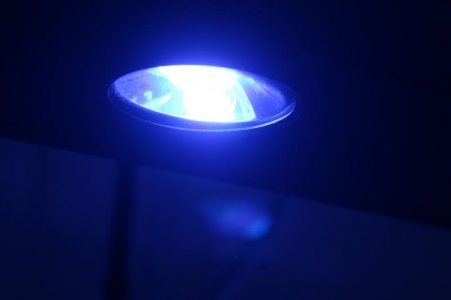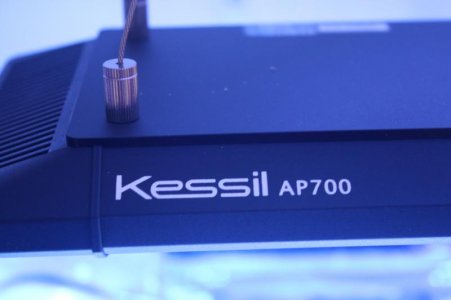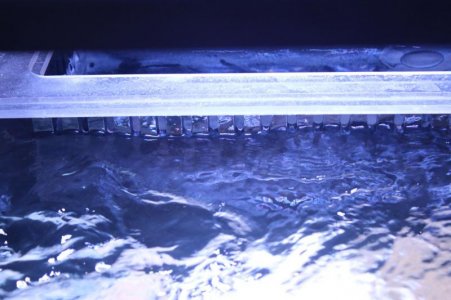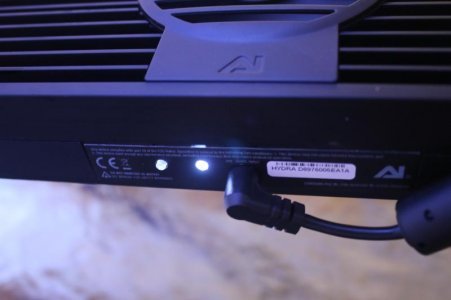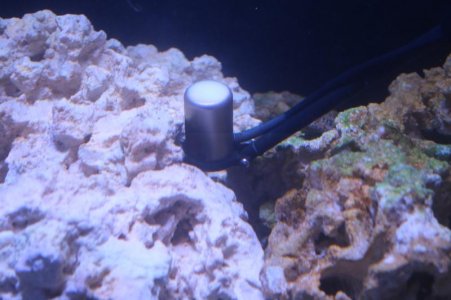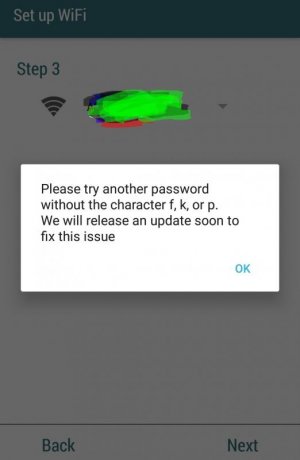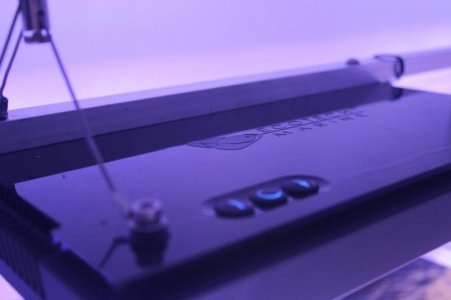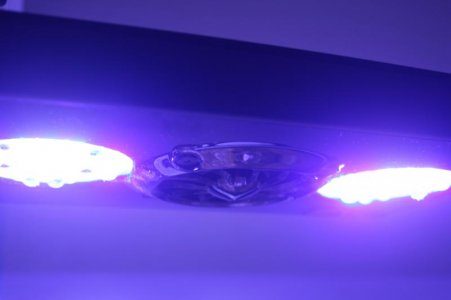Reef2Land
New member
I started another thread where I said I'd put this up once we found time to do the testing cause the shop is ridiculously busy all the time. This was with an Apogee 520, which is one of the best meters we've ever seen. Did as much testing up and down, left and right, just everywhere in order to try to get the best results.
All lights were hung 9 inches off the water surface. We used a medium amount of surface agitation (pictured) since most reefers do. The results were kind of shocking for the first two lights we did today. These are the results between the Hydra 52 and the AP700. We'll let other be the judge of this.
Forgive the tank appearance as it was primarily set up for this purpose lol
Aqua Illumination Hydra 52
Light 9 inches off water surface. Light meter 6 inches submerged directly under the LEDs 515.
4 inches to the left or right of the edge of the light 6 inches submerged 200-215.
9 inches below water surface directly under the LEDs 285-295
9-13 inches meter submerged the numbers*remained consistent
16 inches below water surface directly under the LEDs 255-285
20 inches deep directly under the LEDs 145-155
Kessil AP700
Light 9 inches off water surface and submerged inches below water surface directly under the LEDs 285-305
4 inches to the left or right of the edge of the light and 6 inches below the water surface 175-185
8 inches below the water water surface the numbers remained fairly consistent.
10 inches below the water surface directly under the LEDs - 200-215
17 inches below the water surface directly under LEDs 205-225
20 inches below the water surface directly under the LEDs 175-185
All lights were hung 9 inches off the water surface. We used a medium amount of surface agitation (pictured) since most reefers do. The results were kind of shocking for the first two lights we did today. These are the results between the Hydra 52 and the AP700. We'll let other be the judge of this.
Forgive the tank appearance as it was primarily set up for this purpose lol
Aqua Illumination Hydra 52
Light 9 inches off water surface. Light meter 6 inches submerged directly under the LEDs 515.
4 inches to the left or right of the edge of the light 6 inches submerged 200-215.
9 inches below water surface directly under the LEDs 285-295
9-13 inches meter submerged the numbers*remained consistent
16 inches below water surface directly under the LEDs 255-285
20 inches deep directly under the LEDs 145-155
Kessil AP700
Light 9 inches off water surface and submerged inches below water surface directly under the LEDs 285-305
4 inches to the left or right of the edge of the light and 6 inches below the water surface 175-185
8 inches below the water water surface the numbers remained fairly consistent.
10 inches below the water surface directly under the LEDs - 200-215
17 inches below the water surface directly under LEDs 205-225
20 inches below the water surface directly under the LEDs 175-185

